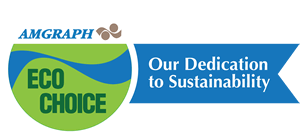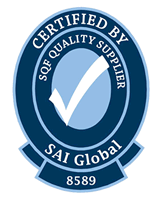From raw materials to packaging to shipping—here are five ways you can make small, incremental progress toward your sustainability goals.
Most consumer goods manufacturers are taking steps to improve sustainability within their facilities. It’s the right thing to do from an environmental perspective, and customers are demanding it. Becoming a more planet-friendly business is smart on all fronts.
But can your business do more? The materials used in manufacturing, packaging, and shipping are part of a long supply chain, and sustainability can be improved all along the way. Here are five ways you can improve your supply chain with an eye toward your green commitment.
Reduce fossil fuel
When you think about your supply chain, you probably think of shipping first. How do materials get to you? Reducing fuel used to transport materials is the first step in improving your carbon footprint.
Source your materials as close to your facilities as you can. Domestic and local sourcing is the simplest way to reduce the carbon footprint directly tied to your products. And, of course, it supports your local economy. Customers appreciate that.
It probably won’t be possible for you to locally source everything, though. Many raw materials in the sustainable category are produced overseas—so you’ll need to consider your overall logistical plan. Make sure you order full shipments so you aren’t paying to ship half-full cartons while burning almost as much fuel as full cartons would. Fill up those shipments as much as possible with materials that have a durable shelf-life, and then warehouse them domestically.
Choose suppliers with green initiatives
Partnering with suppliers who have the same green goals as you will increase your impact. Actively seek out suppliers who use alternative energy source like fuel cells, heat capturing, passive heating and cooling, geothermal heating, solar, and wind. Other initiatives might include wastewater reduction, post-industrial recycling, and office waste management—all indicators that a company has a true commitment to sustainability.
Beware of “greenwashing.” Do a deep dive with your suppliers to determine if they really live up to your environmental standards.
Prioritize ethical manufacturing practices
When you are evaluating your suppliers, take time to review their business practices. The right sustainable partners will reflect ethical decision-making in every aspect of their organizations, particularly their labor practices. The United Nations Global Compact emphasizes the importance of fair and decent labor standards, encouraging companies to leverage their supply chains to address labor rights through its Decent Work in Global Supply Chains Action Platform.
Choose suppliers who practice ethical labor. Diversity, living wages, educational offerings, healthcare, and community service all demonstrate that a company is committed to creating a better planet, starting at home.
They should also make the effort to get the right certifications and commit to research and development of innovative green solutions.
Replace traditional structures with efficient options and reduce material.
Smart packaging design is one of the best ways to “green” your supply chain. Right-size your packages and downgauge where possible to reduce total material consumption. You can reduce paper basis weights, reduce foil caliper, and replace thick sealant webs with thinner high barrier alternatives. This can cut costs while also reducing package weight and freight expense.
Here are a few ideas:
- Foil replacements: Barrier coatings, both metalized and non-metalized, are available and can be certified recyclable.
- Alternative films: Foil-free, PCR, compostable, and recyclable options exist and offer myriad solutions.
- Alternative papers: Uncoated papers are available for compostable structures as well as barrier coated papers that are eligible for recyclable certification.
- PCR films are available commercially (some even food grade) and can provide a more sustainable solution for materials that might not be eligible for compostable or recyclable waste streams.
AMGRAPH has expertise in these and other earth-friendly packaging options and can help guide you toward the best solutions.
Find something that you can do today.
The first step is always the hardest. You can’t do it all at once, but you need to dive in. Is there a single flavor or line you can examine for increased sustainability? What can you do today to let people know you are committed to improving the environmental impact of your supply chain?
Don’t be afraid to ask for support. Some materials require slight tweaks to equipment, and there are experts who can help. If your supplier can’t support a structure change on your equipment, find one that can and will.
Creating to a more sustainable supply chain is our duty, and efforts can reach far beyond what we do in our individual facilities. When you partner with AMGRAPH, we’ll help you improve several steps along the chain—and make sure your packaging lives up to your sustainability promise.









